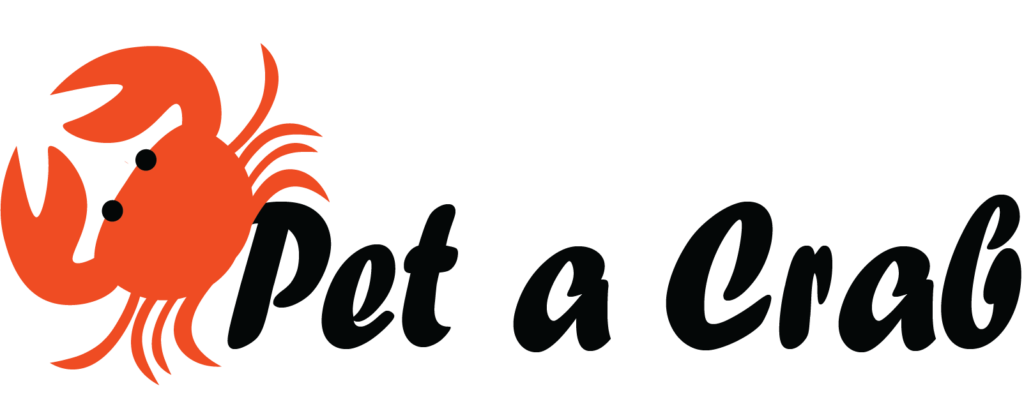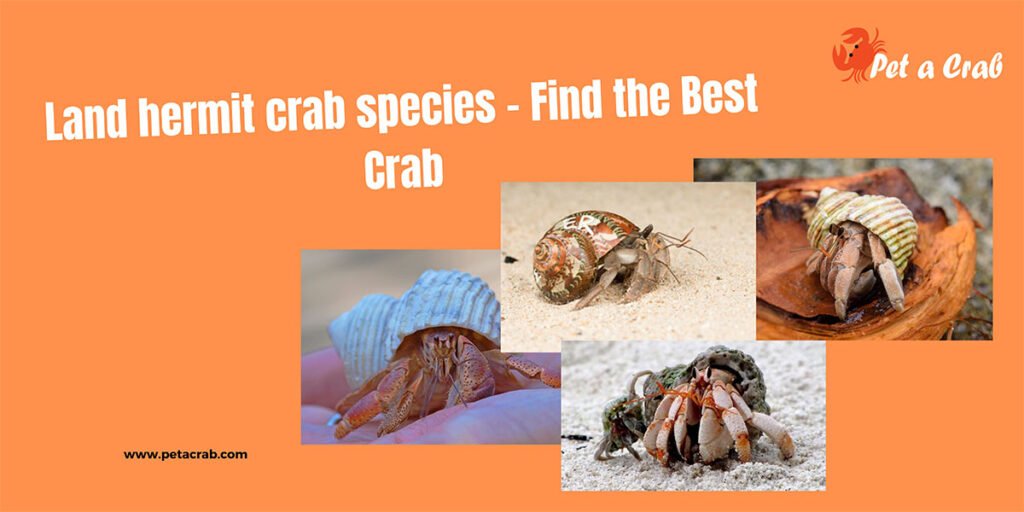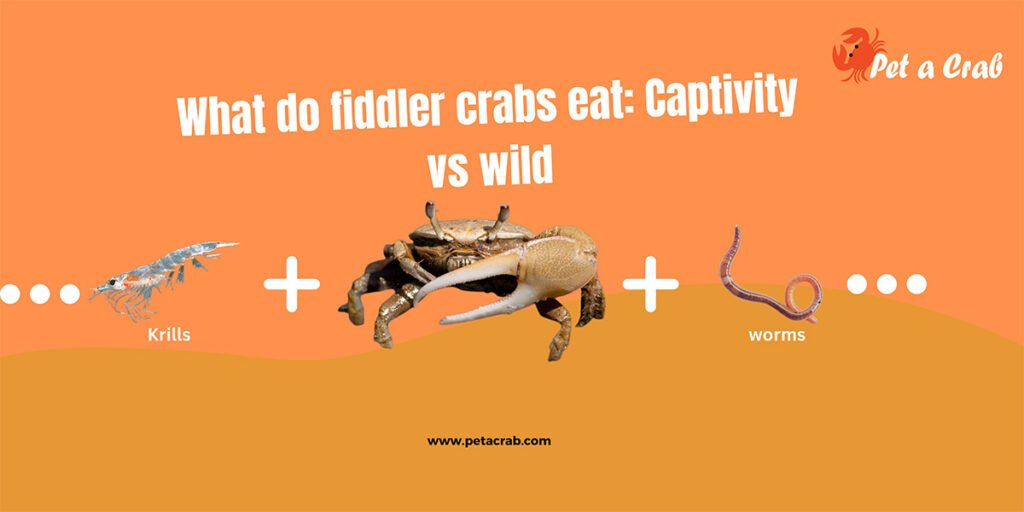The marine hermit crab species have a more vibrant appearance than the land hermit crab. And polka dot hermit crab is one of them. It has orange legs with polka dotted claws making your marine collection more ornamental. Also, polka dot hermit crabs live in the bottom of the tank eating algae, feces, and food waste keeping your tank clean which makes them perfect low maintenance crab.
Quick overview of polka dot hermit crab
· Name
Polka dot hermit crab also known as polka dot reef hermit, polka dot one claw crab and its scientific name is Phimochirus operculatus.

· Natural habitat
Phimochirus operculatus can be found both day and night over seagrass, rubble and shell beds of coral reefs in the widespread area of the Caribbean and Western Atlantic.
· Temperament
The polka dot hermit crab is considered less aggressive compared to other hermit crab species but sometimes they can fight or kill other hermit crabs to occupy the shell or they may become aggressive if they don’t get enough space or hiding places. In one word “peaceful.”
| · Care Level | Easy |
| · Breeding | Nearly impossible in captivity |
| · Size | Can reach up to 1.5 inches which is considered bigger marine hermit crabs compared to other species |
| · Optimal temperature | 22 – 26°C (~72°F – 80°F) |
| · Diet | Omnivorous |
| · Sleeping nature | Nocturnal |
| · Reef safe | Yes, sometimes they may knock the reefs but it won’t harm the reefs. That’s why they are preferred as the coolest reef safe hermit crab |
| · Life span | Around 3 years in captivity |
| · Color | Different shades of orange, white, blue and black |
Interesting facts about polka dot hermit crab
- The Polka dot hermit crab is considered the least shy hermit crab compared to other hermit crab species. Usually, all of the hermit crabs are shy and love to hide themselves, some are less and some are more. Shyness can be reduced by training with promised food for climbing on hand.
- They don’t have both same sized claws. One is much bigger than the other ones. When they feel threatened or any predators attack them, retreat into their shells and close the opening with the bigger claw which gives the appearance of a snail inside.
Polka dot hermit crab care
Tank setup
Tank size
You can’t keep one polka dot hermit crab alone as they are social, try to keep at least two with female and male, more if possible. If there is only one polka dot try to keep it with other hermit crab species like blue leg hermits or red tip hermit crabs. For only two polka hermits without any tankmates, the size would be a minimum of ten gallons. If there are more tankmates or crabs (like 5 to 6) the size would be a minimum of 25 gallons.
Substrate
The first rule of the substrate is trying to mimic their natural habitat. In the wild, they prefer to live in sandy substrate. So sand should be the base of the substrate. The substrate needs to be enough deep so that they can burrow fully, at least 4 inches deep.
If you are using gravel or other stone ensure the grains are small. Avoid big stones as they bury themselves, they may stuck for that and also avoid sharp stones.

Decoration
You can decorate the tank however you want with your creativity like corals and live plants. The hiding place is must need for them as they like to hide and sleep the whole day. You can use rock or houses that are sold online and don’t forget about the climbing medium.
Temperature and water parameters for polka dotted reef hermit crab
The perfect temperature for polka dot hermit crab is 22 – 26°C (72°F – 80°F). Ensure the temperature is well maintained. You can use a thermometer to keep track of that because sudden changes in temperature will affect the crabs’ health.
dKH and sg will be what most of the marine hermit crabs need like dKH 8-12 and sg should be 1.023 to 1.025. The pH level needs to be between 8.1 and 8.4.
If these parameters bounce a little high and low that won’t cause any trouble because they have the flexibility to adapt a little bit.
Polka dot hermit crab feeding
Less food for a little stomach makes things easy to manage. Polka dot hermits play the role of ‘clean up crew’ by eating leftover food of the fish that falls on the ground like leftover meaty food, decayed things like macro-algae and dead plants, feces, organic debris, macroscopic pieces of dead or live animal tissue, dried seaweed.
As omnivorous they will eat almost anything including cyanobacteria. Basically, the things you would have to clean manually. They can collect the waste from corners where other shrimps or fish will struggle to reach.
But you need to ensure they get balanced food with a lot of calcium which will help them while molting. It is a good practice to give them fruits, veggies and treats once in a while.

Shell requirement
Polka dotted hermit crabs dependent on gastropod shells to protect their vulnerable body. As they grow bigger they need new shells to move on. If they see another crab has a better shell, they’ll attack and try to occupy the shell; sometimes it leads to death. Many times it happens mutually that is called ‘shell swapping.’ Otherwise, they’ll feel threatened with their exposed abdomen.
To prevent fighting for shells and aggression you need to ensure they have access to plenty of different sized shells minimum of 3-5 for each crab.
Light requirement
No need for thinking about light normal LED is more than okay during the day. No need for intense light unless the tank does not get natural light. They’ll be active at night as they are nocturnal; so no light is preferable at night. If you want to see them and track their movement you can use a dark light, they won’t see the light but you can. Remember, they prefer 12h of light and 12h of dark.
Tank mates of polka dot hermit crab
Choose peaceful fishes like mollies and guppies, and non-aggressive fish. Don’t make it too crowded and do not put bigger fish.


